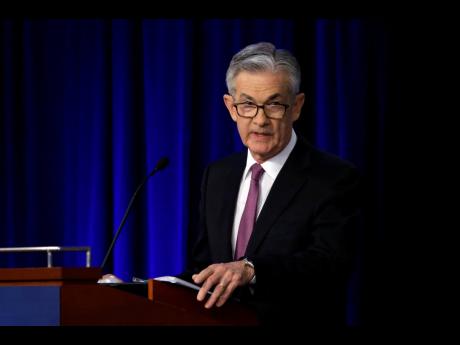Fed hints at future rate cuts
The United States Federal Reserve left its key interest rate unchanged Wednesday but signalled that it’s prepared to start cutting rates if needed to protect the US economy from trade conflicts and other threats.
The Fed kept its benchmark rate – which influences many consumer and business loans – in a range of 2.25 per cent to 2.5 per cent, where it’s been since December.
It issued a statement saying that because “uncertainties” have increased, it would “act as appropriate to sustain the expansion”. That language echoed a remark Chairman Jerome Powell made two weeks ago that analysts interpreted as a signal that rate cuts were on the way.
The uncertainties the Fed referred to clearly include US trade conflicts, especially with China. The effects of tariffs and counter-tariffs between the United States and China have become perhaps the leading threat to the US economic expansion, which next month will become the longest on record.
In its statement, the Fed removed a reference to being “patient” about adjusting rates. That suggested that it’s now inclined to begin cutting rates for the first time in more than a decade. It remains unclear, though, when that might happen.
The Fed’s decision was approved on a 9-1 vote, with James Bullard, president of the Fed’s St Louis regional bank, dissenting because he thought the central bank should begin cutting rates now. It marked the first dissent from a Fed decision since Powell became chairman in February last year.
A survey of the 17 Fed officials showed that nearly half now expect at least one rate cut this year, with seven projecting two cuts. When they previously issued forecasts in March, none had predicted a rate cut in 2019.
Many Fed watchers have said they think the policymakers want to first see whether a meeting that President Donald Trump and President Xi Jinping are to hold late next week at a Group of 20 nations summit in Japan produces any breakthrough in the US-China trade war.
Opportunity and risk
That meeting carries opportunity as well as risks, said Jay Bryson, global economist at Wells Fargo.
It’s possible the meeting could lead to the removal of tariffs that would help growth and nullify the need for rate cuts. But it’s also possible that the leaders of the world’s two largest economies could deepen their feud and that new import taxes could be launched.
“The clearest and present danger is the G-20 meeting next week,” Bryson said. “It could go either way.”
Many analysts think the central bank will wait until September at the earliest to announce its first drop in its benchmark short-term rate since 2008 and might not cut again in 2019. A few Fed watchers foresee no rate cut at all this year, especially if the United States and China reach some tentative resolution to the trade war.
Complicating the timing of possible rate cuts is an escalation of attacks on the Fed by Trump as he gears up for his 2020 re-election campaign. Trump’s public criticism, a highly unusual action for a president, has raised concern that he is undermining the Fed’s independence as a central bank. The president has asserted that under Powell’s leadership, the Fed hurt the economy by tightening credit too much last year and by failing to lower rates since then.
This week, Trump was asked about a news report that the White House in February had explored whether the president had the authority to demote Powell as chairman while leaving him on the Fed’s board.
“Let’s see what he does,” Trump said of Powell. “They’re going to be making an announcement very soon. So we’ll see what happens.”
The president has previously explored firing Powell. But under the law, a Fed board member, like Powell, can be fired only for cause.
At his news conference, Powell was asked what he would do if Trump said he intended to demote him.
“I think the law is clear that I have a four-year term, and I fully intend to fulfil it,” the chairman said, reiterating what he has said previously.
– AP

